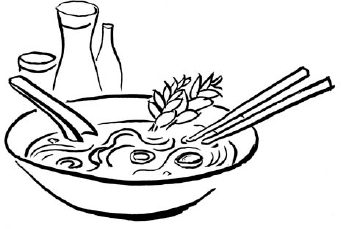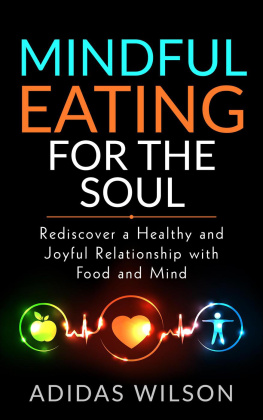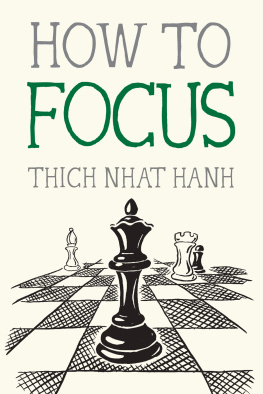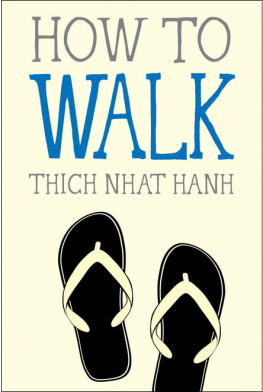


Parallax Press
P.O. Box 7355
Berkeley, California 94710
www.parallax.org
Parallax Press is the publishing division of Unified Buddhist Church, Inc.
2014 by Unified Buddhist Church
All rights reserved
Cover and text design by Debbie Berne
Illustrations by Jason DeAntonis
ISBN: 978-1-937006-73-0
Library of Congress Cataloging-in-Publication Data
Nhat Hanh, Thich, author.
How to eat / Thich Nhat Hanh ; illustrated by Jason DeAntonis.
pages cm
1. MeditationBuddhism. 2. Dinners and diningReligious aspectsBuddhism. I. Title.
BQ9800.T5392N45448 2014
294.3444dc23
2014015222
1 2 3 4 5 / 18 17 16 15 14

CONTENTS
To cultivate mindfulness, we can do the same things we always dowalking, sitting, working, eating, and so onwith mindful awareness of what we are doing. When were eating, we know that we are eating. When we open a door, we know that were opening a door. Our mind is with our actions.
When you put a piece of fruit into your mouth, all you need is a little bit of mindfulness to be aware: I am putting a piece of apple in my mouth. Your mind doesnt need to be somewhere else. If youre thinking of work while you chew, thats not eating mindfully. When you pay attention to the apple, that is mindfulness. Then you can look more deeply and in just a very short time you will see the apple seed, the beautiful orchard and the sky, the farmer, the picker, and so on. A lot of work is in that apple!


With just a little bit of mindfulness, you can truly see where your bread comes from. It has not come from nothing. Bread comes from the wheat fields, from hard work, and from the baker, the supplier, and the seller. But the bread is more than that. The wheat field needs clouds and sunshine. So in this slice of bread there is sunshine, there is cloud, there is the labor of the farmer, the joy of having flour, and the skill of the baker and thenmiraculously!there is the bread. The whole cosmos has come together so that this piece of bread can be in your hand. You dont need to do a lot of hard work to get this insight. You only need to stop letting your mind carry you away with worrying, thinking, and planning.
In modern life, people tend to think their bodies belong to them, that they can do anything they want to themselves. But your body is not only yours. Your body belongs to your ancestors, your parents, and future generations. It also belongs to society and to all the other living beings. The trees, the clouds, the soil, and every living thing brought about the presence of your body. We can eat with care, knowing we are caretakers of our bodies, rather than their owners.
When we eat we usually think. We can enjoy our eating a lot more if we practice not thinking when we eat. We can just be aware of the food. Sometimes we eat and were not aware that were eating. Our mind isnt there. When our mind isnt present, we look but we dont see, we listen but we dont hear, we eat but we dont know the flavor of the food. This is a state of forgetfulness, the lack of mindfulness. To be truly present we have to stop our thinking. This is the secret of success.
When we serve ourselves food and then bring it to the table, we dont need to feel were waiting for other people to serve themselves and be seated. All we have to do is breathe and enjoy sitting. We havent eaten our meal yet, but we can already feel joy and gratitude. Its an opportunity for us to be peaceful.
Standing in line at a grocery store or a restaurant, or waiting for the time to eat, we dont need to waste our time. We dont need to wait for one second. Instead, we can enjoy breathing in and out for our nourishment and healing. We can use that time to notice that we will soon be able to have food, and we can be happy and grateful during that time. Instead of waiting, we can generate joy.
When we can slow down and really enjoy our food, our life takes on a much deeper quality. I love to sit and eat quietly and enjoy each bite, aware of the presence of my community, aware of all the hard and loving work that has gone into my food. When I eat in this way, not only am I physically nourished, I am also spiritually nourished. The way I eat influences everything else that I do during the day.
Eating is as important a time for meditation as sitting or walking meditation time. Its a chance to receive the many gifts of the Earth that I would not otherwise benefit from if my mind were elsewhere. Here is a verse I like to recite when I eat:
In the dimension of space and time,
We chew as rhythmically as we breathe.
Maintaining the lives of all our ancestors,
Opening an upward path for descendants.
We can use the time of eating to nourish the best things our relatives have passed onto us and to transmit what is most precious to future generations.
While we eat, we can try to pay attention to just two things: the food that were eating and our friends who are sitting around us and eating with us. This is called mindfulness of food and mindfulness of community. Eating mindfully, we become aware of all the work and energy that has gone into bringing the food to us. If we are eating with others, we can notice how wonderful it is that during this sometimes hectic life we can find the time to sit together in a relaxed way like this to enjoy a meal. When you can breathe, sit, and eat together with your family or friends in mindfulness, this is called true community-building.
Pay attention to each spoonful of food. As you bring it up to your mouth, use your mindfulness to be aware that this food is the gift of the whole universe. The Earth and the sky have collaborated to bring this spoonful of food to you. While breathing in and out, you only need a second or two to recognize this. We eat in such a way that every morsel of food, every moment of eating has mindfulness in it. It takes only a few seconds to see that the food were holding in our spoon is the gift of the whole cosmos. While we chew, we maintain that awareness. When we chew, we know that the whole universe is there in that bite of food.
The first thing to do when you sit down with your bowl of food is to stop the thinking and be aware of your breathing. Breathe in such a way that you are nourished. You are nourished by your breathing and you nourish other people with your practice of breathing. We nourish one another.

Sometimes people eat while watching TV. But even if you turn off the TV, the TV in your mind continues to run. So you have to also stop the TV in your head. If there is thinking still going on in your mind, youll be dispersed. To be truly present you need to not just turn off the television or radio in your house, you need to turn off the conversation and images in your head.
Next page








